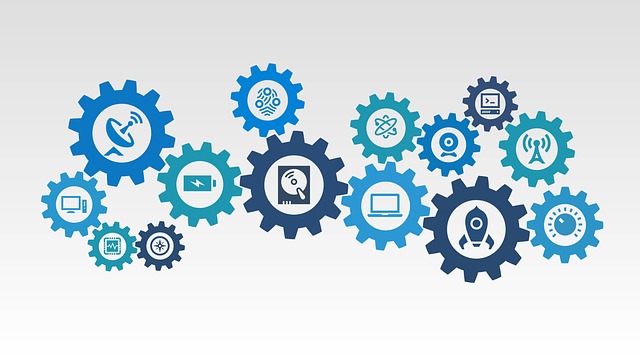5/5 (1) The payment industry includes any organization and individual who takes part in a transaction, as sender, receiver or intermediar. It represents organisations like MasterCard and UnionPay – who partner with banks like ING in order to earn fees from the processing of payments. For this blogpost, we will zoom in on the payment gateway, which is being disrupted due to technological innovations.

How we are paying is changing dramatically. Some societies still prefer cash (Ellore, 2017), while others have transitioned to digital solutions. Digital transaction is becoming easier, cheaper and more secure than ever. In the past 50 years, the industry invented the credit, debit, and prepaid cards, which dominated the industry. In 1998, cards outnumbered cheque usage worldwide; in 2004, card transactions have totalled worldwide more than $12 trillion. However, the continued success of cards has led to innovative stagnation, which made banks vulnerable to other gateway providers.
The first contactless card was introduced in 2007, the same year Apple debuted the “iPhone”. Unlike the banks, the tech industry continued redefining itself over time and eventually expanded to multiple industries – including the payment industry with Apple Pay and Alipay. In the present, the banks have made little progress towards embracing technology or transitioning to mobile, while fintech organisations like Alipay and Apple have entered the bank’s original business model of earning fees through the processing of transactions.
The Dutch banks have developed their own applications, but they are limited to balance overview, money transferring, and some online payments. In most scenarios, verification readers, e.g. RaboScanner, are still required to process an online transaction.
Although card transactions have dominated for decades, their inefficiencies have remained to the very present:
- Non-instantaneous transactions
- Expensive and intransparent cross-border transactions
- Inconvenient and outdated verification process
Using Porter’s five forces, insights to the industries vulnerabilities are identified. Threat of new entrants is high as industrial boundaries keep blurring with that of other industries and technological costs continue to decrease over time – diminishing overall barriers to entry. Bargaining power of buyers is high as dependency on banks decreases and switching costs are reduced as alternatives increases. Bargaining power of suppliers is medium as deregulation empowers entrants to enter the market – thereby reducing supplier concentration and power (sepaforcorporates, 2015). Threat of substitutes is high as new entrants enter the market with lower prices and easier-to-use-services. Industry rivalry is high as banks will not only compete among each other but also with fast growing fintech startups.
Porter’s model presents a dangerous scenario for the incumbents’ short-term and long-term, with emerging organisations making the payment processes more convenient and faster. Hereby, we introduce an organisation that has disrupted the payment industry in China and is currently the largest and most technologically advanced player in the global payment industry: Alipay.
Alipay’s unified payment business model represents the future of mobile payments, and it will therefore likely be the foundation for something similar in the West.
Alipay is an international payment platform, founded in 2004 as a payment platform for Alibaba, out of the need to foster trust between sellers and buyers. Alipay became a success because of the escrow services it offered, where the consumer first needs to confirm that they received their money and are satisfied with the product, before the money is transferred to the merchandiser. With more than 520 million users, Alipay has managed to integrate into the daily lives of the Chinese consumers through the provision of convenient and real-time money transfer between two parties, the offer of payment protection for the users and providing free payment services for their consumers and users with low value of money transaction.
Alipay offers several sustainable competitive advantages compared to current banks:
- Real-time transactions
- Transparent and lower fees
- Easy-to-use verification process
According to Business Insider (2014), Alipay became the largest mobile payment platform in the world in 2014. Alipay announced that they processed nearly $150 billion in mobile transactions the year before, which meant that its mobile payment amount was greater than both PayPal and Square combined.
Moreover, Chinese fintech organisations like Tencent and Alipay managed to disrupt the payment industry in 2015, causing China’s banks and UnionPay to lose $22 billion in transaction fees (Kapron, 2016). Since then more and more consumers continue to shift their payment method from traditional card payments to mobile payments, the segment where banks lack.
As entrants continue to advance their technology, the gap between incumbents and entrants seem to widen further and further, leading to a long-term scenario where the incumbents cannot even compete with the entrants.
The future of the payment industry is therefore uncertain, incumbents will face a period of extreme disruption as new entrants continue to challenge traditional players. Entrants will likely even attain sustainable dominance as platforms like Alipay enable network effects for users and merchants. Simultaneously, the future is inevitably digital and mobile first as consumers will demand transparency, accessibility and real-time processing. Also more ways to authenticate yourself and to verify payments will arise to protect and to utilize user information, e.g. using biometric data, GPS.
– Group 8
Link to video: https://drive.google.com/open?id=0B9lcK_0Kp70VZHNWTDA4YVBOQ28
Bibliography
China Banks lost 22B to Alibaba and Tencent in 2015, but that’s not their biggest problem. (2017). Forbes.com. Retrieved 22 September 2017, from https://www.forbes.com/sites/zennonkapron/2016/03/06/china-banks-lost-22b-to-alibaba-and-tencent-in-2015-but-thats-not-their-biggest-problem/#200247706094
Ellore | Tech Trends: The Future of European Payments: What to expect from banks in the next few years. (2017). Ellore.eu. Retrieved 22 September 2017, from http://www.ellore.eu/2017/08/28/tech-trends-the-future-of-european-payments-what-to-expect-from-banks-in-the-next-few-years/
Heggestuen, J. (2014). Alipay Overtakes PayPal As The Largest Mobile Payments Platform In The World. Business Insider. Retrieved 22 September 2017, from http://www.businessinsider.com/alipay-overtakes-paypal-as-the-largest-mobile-payments-platform-in-the-world-2014-2?international=true&r=US&IR=T
7 Insights Into The Causes of Payments Disruption. (2017). SEPA for Corporates. Retrieved 22 September 2017, from http://www.sepaforcorporates.com/payments-news-2/7-payments-disruption-insights-deloitte/


